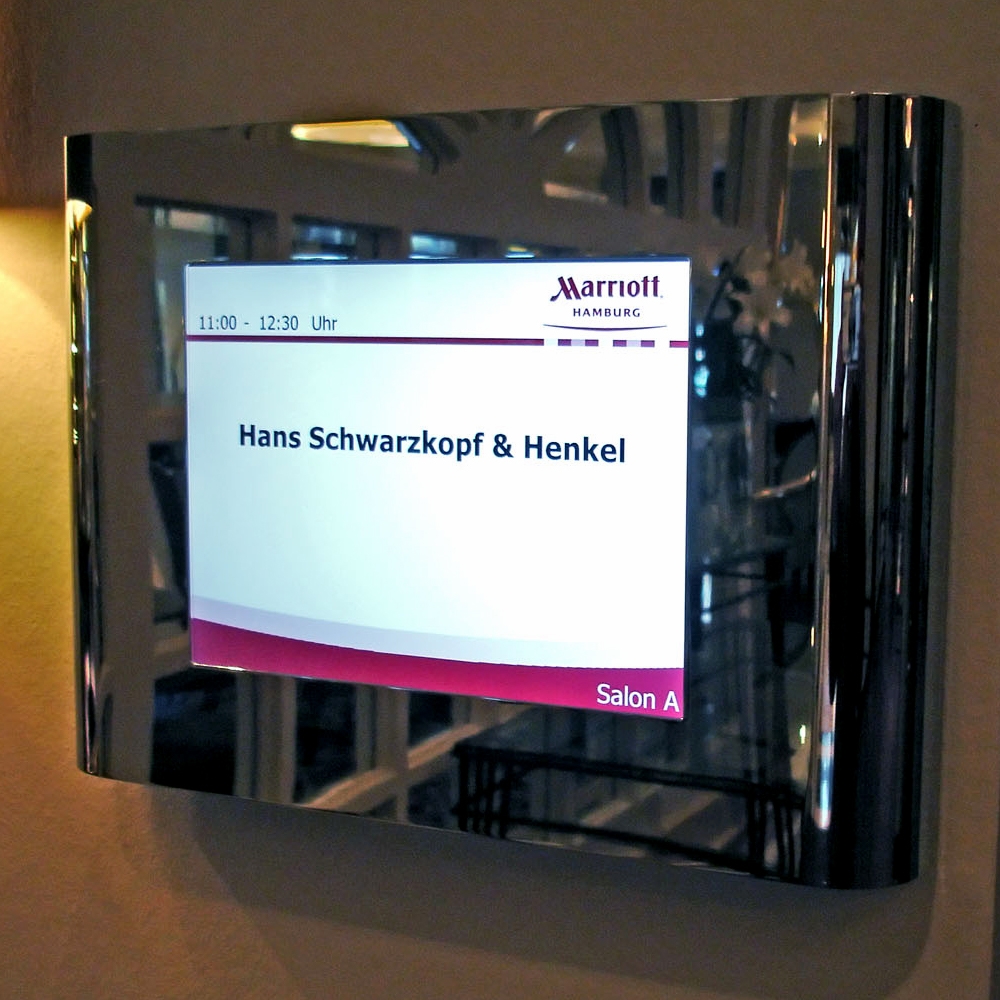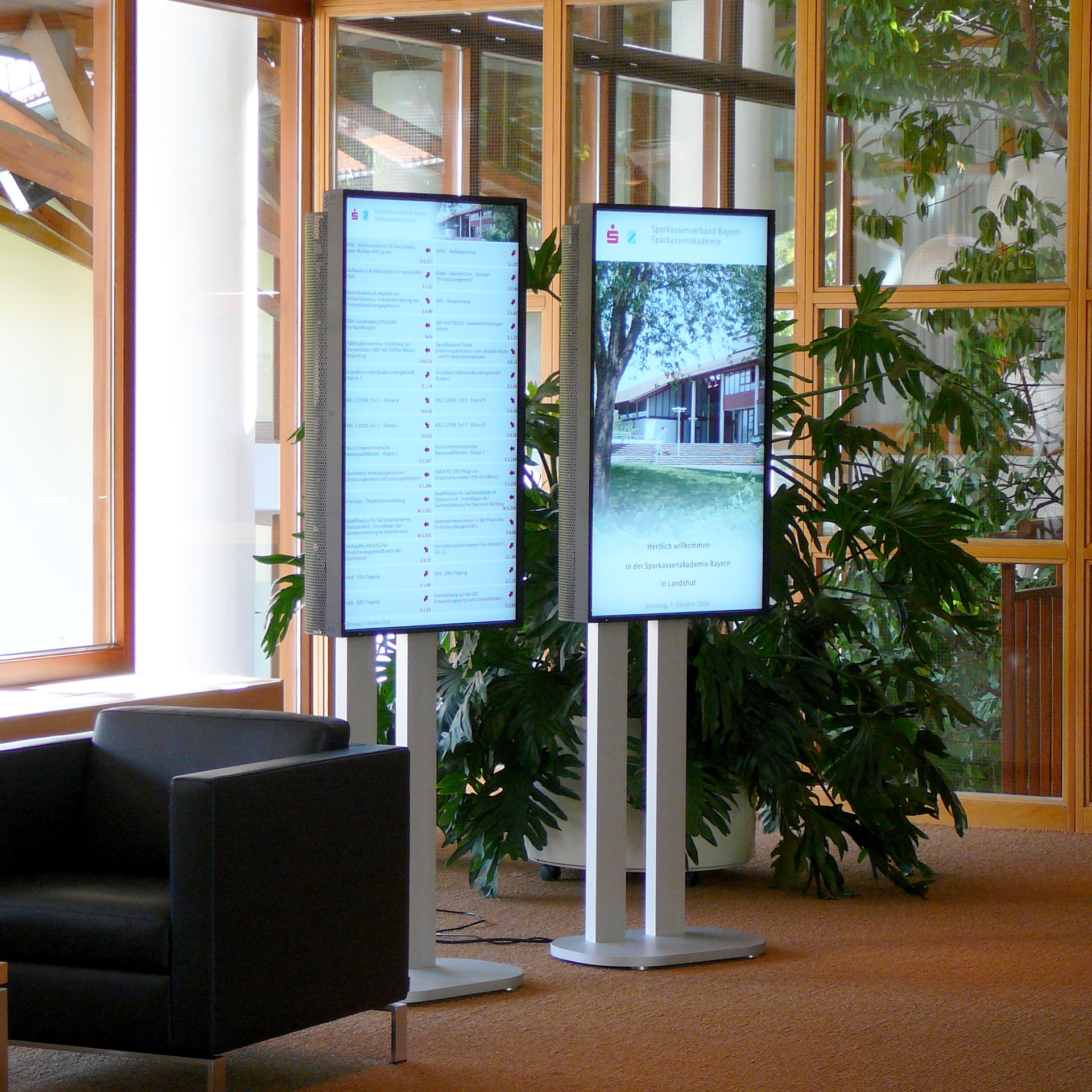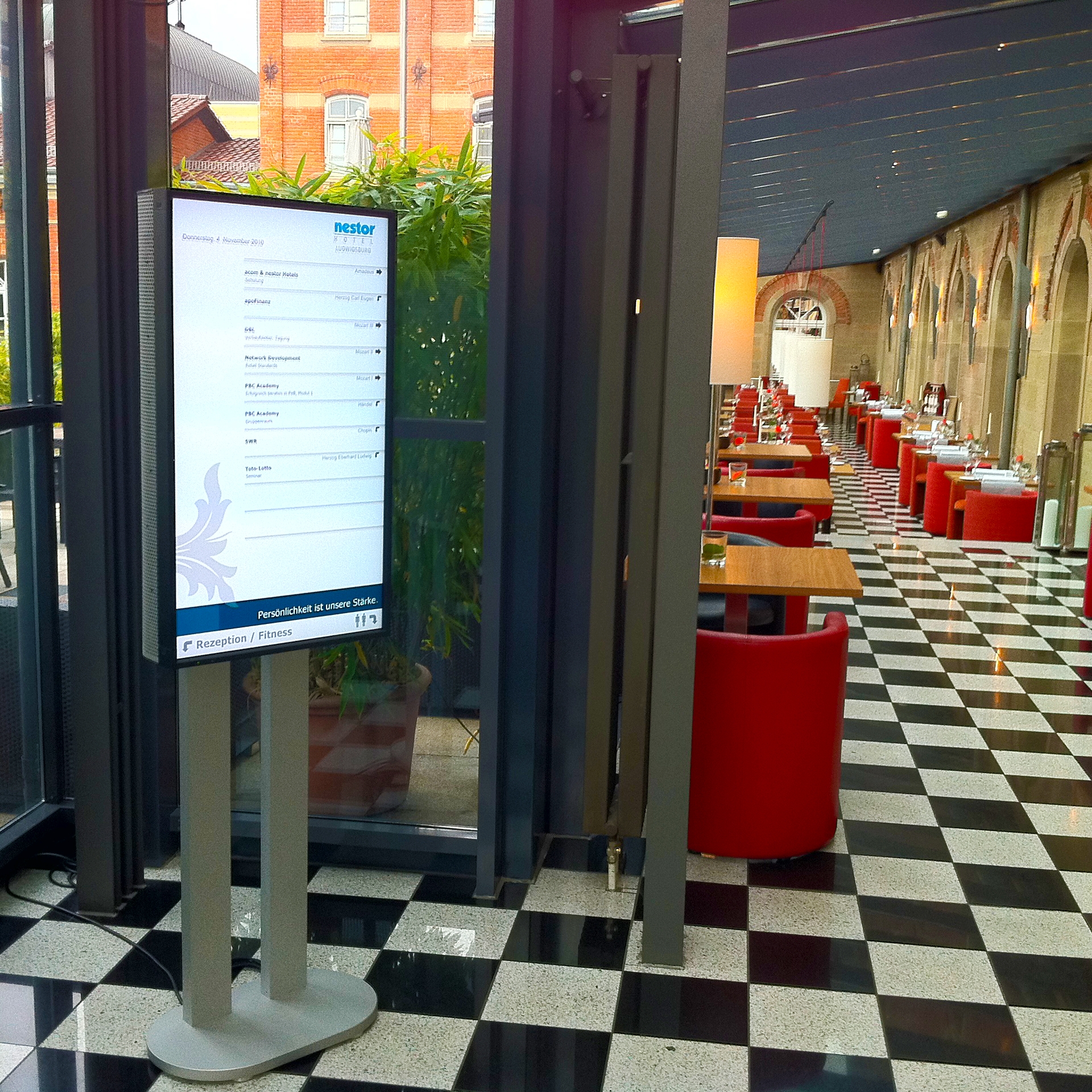What does digital signage actually mean?
Hello, my valuable readers!
In this week we will talk about pretty general topic. The alpha to the omega, so to speak: "What actually is digital signage?"
In the following paragraphs I'll try to show you a glimpse of what digital signage is really about. And I hope I can do so in an entertaining way. Let's do this!
A term - that keeps its promise
Well, if you really want to be pedantic, you could say: "It's simple! Digital Signage is about digital signs, duh!"
And... I can't really argue with that. It is kind of true (but not nice!). The purpose of digital signage is to replace analogue signs like door plates, signposts, etc. with a more efficient and easier to maintain digital solution.

Digital Signage != Digital Signage
Fun fact: In the end it doesn't even... Wait. Wrong topic.
In the end digital signage is a broad term and describes a lot of different use cases.
And I can tell you with absolute certainty: You witnessed the magic of digital signage at least once in your life. I am sure of that.
Those fancy screens in your local supermarket with recipe ideas, celebrity news. special offers, etc.? That is digital signage. Every screen in your average hotel lobby showcasing events and conferences are also part of a signage strategy.
But that's not all: Museums and in general modern tourist attractions tend to incorporate digital signage as a method to attract and inform customers
A growing market for signage applications are shared office spaces, where multiple parties temporarily share a space to work. Some stay a day, some only hours, others even weeks or months.
And the use cases mentioned are not even close to all applications. If you want to read more about it, I can recommend the Wikipedia-entry (even if it has some issues): https://en.wikipedia.org/wiki/Digital_signage

And why exactly should I care about Digital Signage?
Well, good question. Why should you? No one is keeping you here. Am I such a charming fellow?
All jokes aside, a well implemented digital signage opens up a lot of possibilities, especially regarding efficiency and convenience.
Efficient in at least the regard of saving some expensive paper and printer ink. But more importantly that your users will be able to control all the signs in one place.
Convenience-wise, it will not only be convenient for you, but also for your customers.
Let's talk about convenience. Imagine that you are... well, a shared office, why not? I will now present you with a little case study about a pretty common problem or issue you would face in such an environment.
Case study: Due to a malfunction, a room that has been booked cannot be used and the customer has to move to another room.
General situation (which I did not choose that way to influence your opinion in a way that would be beneficial for me. How dare you?):
- You are not on site. Well, no one is on site. Your customers are able to book and enter the office via app
- There is a room available.
You do not use a digital signage solution
What happens now? How do you handle telling your customer that he has to use another room in your facility? How do manage the signage? How do you direct your customer to the right location?
- Do you call him? What happens if you can't reach him?
- Are you going to drive there? Is this even a possibility?
- If it is possible to go there, how do show your customer those changes? An analogue sign like a piece of paper? Those in plastic wrapped paper signs (disgusting)? Now you need how many signs? One for the broken room, one for the new room and at least one at the entrance. That's three signs you have to place.
Sounds pretty inconvenient to me.
You do use a digital signage solution
Well, how do you inform the customer in this scenario?
- You open up your application (if it's a cloud solution, you'll do so in your webbrowser).
- You register the room change.
- The screens automatically get updated with the new data and will show the customer on site where he has to go.
- And if you want it real fancy: The customer gets a push message to his smartphone informing him about the changes.
Conclusion
Well, even if the comparison was not the fairest one, the example speaks for itself.
With a stable and easy-to-use signage software you'll be able to streamline a lot of different areas for you and your customers.

A few final words
Well, thank you for coming this far!
I hope you were able to learn something and to have a bit of a laugh or at least cringe a bit.
If you have any additional questions, please do not hesitate to write me an email: fcoenen@netmax.de.
And if not, I hope you have some time to browse the page.
Until then! Don't be a stranger!
March 22, 2021